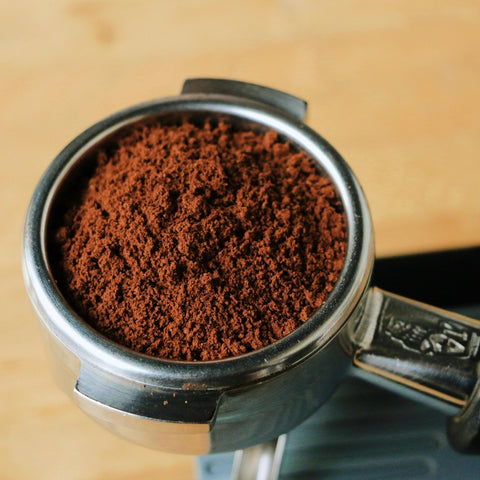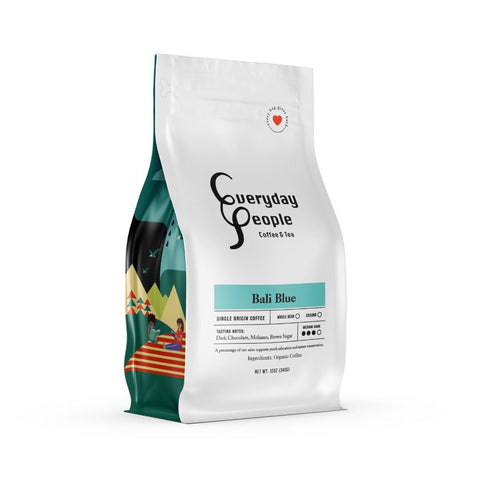Americans consume over 400 million cups of coffee daily, generating millions of pounds of used coffee grounds that typically end up in landfills. Instead of throwing away this valuable resource, you can transform your morning ritual into an eco-friendly practice by learning how to recycle coffee grounds at home.
Used coffee grounds are rich in nitrogen, antioxidants, and natural compounds that make them incredibly versatile for household applications. This comprehensive guide explores 15 practical methods to repurpose your coffee grounds while reducing waste and saving money.
Why Should You Recycle Coffee Grounds?
Coffee grounds contain valuable nutrients and properties that benefit both your home and the environment:
- High nitrogen content (2-3%) makes them excellent for composting
- Natural acidity helps certain plants thrive
- Antioxidants and caffeine provide skincare benefits
- Abrasive texture works as a natural scrubbing agent
- Oil absorption properties help with cleaning and deodorizing
When coffee grounds decompose in landfills, they produce methane, a greenhouse gas 25 times more potent than carbon dioxide. By recycling coffee grounds at home, you're actively reducing your environmental footprint.
15 Creative Ways to Recycle Coffee Grounds at Home
1. Create Nutrient-Rich Compost
Coffee grounds are considered "green" compost material due to their high nitrogen content. Add used grounds to your compost bin along with "brown" materials like dried leaves, paper, or cardboard to maintain proper carbon-to-nitrogen ratios. For detailed composting guidelines, refer to the EPA's comprehensive composting guide.
How to use:
- Mix 1 part coffee grounds with 3 parts brown materials
- Turn compost regularly to prevent odors
- Finished compost will be ready in 3-6 months
For comprehensive composting guidance with coffee grounds, Epic Gardening provides detailed instructions and troubleshooting tips for home composters. Additionally, many coffee shops participate in grounds recycling programs - Drift Away Coffee explains how to source free grounds from local businesses.
2. Fertilize Acid-Loving Plants
Many plants thrive in slightly acidic soil, making coffee grounds an excellent natural fertilizer. Blueberries, azaleas, rhododendrons, and tomatoes particularly benefit from coffee ground applications. To determine which plants will thrive in your area, check the USDA Plant Hardiness Zone Map for your region.
Application method:
- Sprinkle thin layers around plant bases
- Work grounds into soil surface
- Water thoroughly after application
- Apply monthly during growing season
For detailed gardening guidance, the BBC Gardeners World Magazine provides expert advice on using coffee grounds for various plants.
Fresh coffee grounds are acidic, but used coffee grounds are neutral when added to the soil, as confirmed by UC Agriculture and Natural Resources. The University of California's Master Gardener program explains that the acid leaches into your cup during brewing, leaving neutral pH grounds perfect for most plants.
3. Natural Pest Deterrent for Gardens
The caffeine and acidity in coffee grounds naturally repel common garden pests including slugs, snails, and certain insects. Create protective barriers around vulnerable plants using this eco-friendly pest control method. Research from Oregon State University confirms that coffee grounds can effectively kill slugs while improving soil quality.
Effective against:
- Slugs and snails
- Ants
- Aphids
- Flea beetles
Application: Create a 2-inch wide barrier around plants, refreshing every few weeks or after heavy rain.
4. Homemade Body Scrub
Coffee grounds make an excellent exfoliating scrub that removes dead skin cells while providing antioxidant benefits. The caffeine can also temporarily tighten skin and improve circulation. Learn more about the science behind coffee ground beauty treatments and other natural alternatives at Healthline's comprehensive guide.
DIY Coffee Scrub Recipe:
- 1 cup used coffee grounds
- 1/2 cup coconut oil or olive oil
- 1/4 cup brown sugar (optional)
- 1 teaspoon vanilla extract
Mix ingredients and store in an airtight container. Use 2-3 times weekly in the shower.
5. Natural Cleaning Abrasive
The gritty texture of coffee grounds makes them perfect for scrubbing away stubborn stains and grease from pots, pans, and surfaces without scratching. Professional cleaners recommend coffee grounds as an effective natural alternative to harsh chemical cleaners, especially for kitchen cleaning tasks.
Cleaning applications:
- Remove burnt-on food from cookware
- Clean barbecue grills
- Scrub away grease stains
- Polish furniture (test small area first)
Method: Sprinkle grounds on damp sponge or cloth and scrub gently. Rinse thoroughly afterward. For more kitchen cleaning tips using coffee grounds, check out Death Wish Coffee's cleaning guide.
6. Eliminate Refrigerator Odors
Coffee grounds absorb and neutralize odors naturally, making them an excellent alternative to baking soda for freshening refrigerators, freezers, and other enclosed spaces.
Instructions:
- Fill small bowl with dried, used coffee grounds
- Place in refrigerator away from food
- Replace every 2-3 weeks
- Use old grounds in compost or garden
7. De-ice Walkways Safely
Coffee grounds provide traction on icy surfaces while being gentler on concrete and vegetation than traditional rock salt. They also add slight melting action due to their dark color absorbing heat.
Winter application:
- Spread grounds on icy walkways and driveways
- Combine with sand for extra traction
- Safe for pets' paws unlike salt
- Won't damage concrete over time
8. Grow Mushrooms at Home
Oyster mushrooms thrive on coffee grounds, making it possible to grow your own gourmet mushrooms using kitchen scraps. This method combines waste reduction with homegrown food production.
Basic mushroom growing:
- Mix fresh coffee grounds with oyster mushroom spawn
- Keep in dark, humid environment (70-75°F)
- Maintain moisture levels
- Harvest in 10-14 days
Note: Purchase mushroom spawn from reputable suppliers for food safety.
9. Natural Hair Treatment
Coffee grounds can add shine to dark hair while gently exfoliating the scalp. The caffeine may also stimulate hair follicles and promote healthy growth.
Hair mask recipe:
- Mix 2 tablespoons grounds with 1 tablespoon coconut oil
- Apply to damp hair and scalp
- Massage gently for 2-3 minutes
- Leave for 10 minutes, then shampoo as usual
10. Attract Earthworms to Your Garden
Earthworms love coffee grounds and will flock to areas where they're applied. These beneficial creatures aerate soil and produce nutrient-rich castings that improve garden health.
Application:
- Scatter thin layers of grounds in garden beds
- Mix into soil lightly
- Combine with other organic matter
- Monitor for increased earthworm activity
11. Candle Making and Fire Starters
Used coffee grounds burn slowly and produce pleasant aroma, making them excellent for homemade candles or natural fire starters for fireplaces and camping.
Fire starter recipe:
- Mix dry coffee grounds with melted wax or petroleum jelly
- Form into small balls or patties
- Let harden completely
- Store in dry location
12. Natural Fabric Dye
Coffee grounds create beautiful brown dyes for fabric, paper, or Easter eggs. This natural dyeing method produces subtle, earthy tones without harsh chemicals.
Dyeing process:
- Steep grounds in hot water for 30 minutes
- Strain liquid and let cool
- Soak fabric for desired color intensity
- Rinse and air dry
Best fabrics: Natural fibers like cotton, linen, and wool take dye most effectively.
13. Cellulite and Stretch Mark Treatment
The caffeine in coffee grounds may temporarily improve skin appearance by increasing circulation and reducing fluid retention in affected areas.
Treatment application:
- Mix grounds with coconut oil
- Massage onto problem areas in circular motions
- Leave for 10-15 minutes
- Rinse with warm water
- Use 2-3 times weekly
14. Meat Tenderizer and Flavor Enhancer
Coffee grounds can naturally tenderize meat while adding subtle flavor complexity. The acids and enzymes help break down tough fibers in less expensive cuts.
Meat rub recipe:
- 2 tablespoons used, dried coffee grounds
- 1 tablespoon brown sugar
- 1 teaspoon salt
- 1 teaspoon garlic powder
- 1/2 teaspoon black pepper
Application: Rub mixture on meat 30 minutes before cooking.
15. Ant Repellent for Kitchen
Ants dislike the strong scent and acidity of coffee grounds. Create natural barriers around ant entry points to deter these pests without harmful chemicals.
Ant control method:
- Identify ant trails and entry points
- Sprinkle grounds along these areas
- Refresh every few days or after cleaning
- Combine with cinnamon for enhanced effectiveness
Best Practices for Collecting and Storing Coffee Grounds
Collection Methods
Daily collection: Empty your coffee maker's filter into a dedicated container after each use. If using single-serve pods, cut them open to extract grounds.
Storage tips:
- Use airtight containers to prevent mold
- Refrigerate if storing for more than 3-4 days
- Freeze in portions for longer storage
- Dry completely before long-term storage
Safety Considerations
- Always let grounds cool completely before handling
- Avoid using grounds from flavored coffees for edible applications
- Test skin applications on small areas first
- Don't apply fresh grounds directly to sensitive plants
Environmental Impact of Coffee Ground Recycling
Recycling coffee grounds at home significantly reduces waste while providing valuable resources for your household. Consider these environmental benefits:
Waste reduction: The average coffee drinker generates 35 pounds of coffee grounds annually. Home recycling diverts this waste from landfills, supporting the EPA's waste reduction goals for sustainable communities.
Carbon footprint: Composting coffee grounds creates valuable soil amendment while reducing methane emissions from landfill decomposition.
Chemical reduction: Many coffee ground applications replace commercial products containing harsh chemicals, improving indoor air quality and reducing environmental contamination.
Where to Get Additional Coffee Grounds
If you need more coffee grounds than your household produces, consider these sources:
Local coffee shops: Many cafes give away used grounds to gardeners and composters. Call ahead to arrange pickup times. One Good Thing by Jillee provides excellent tips for building relationships with local businesses for consistent ground supplies.
Office buildings: Workplaces with coffee stations often discard large quantities of grounds daily.
Restaurants: Establishments serving coffee may provide grounds upon request.
Coffee subscription services: Some companies offer used grounds as part of sustainability programs. HowStuffWorks explores various creative sourcing methods for coffee grounds.
Common Mistakes to Avoid
Over-application: Too many coffee grounds can create acidic conditions harmful to some plants and soil organisms.
Fresh ground usage: Newly brewed grounds are more acidic than used ones. Let them decompose slightly before garden applications.
Ignoring mold: Stored coffee grounds can develop mold quickly in humid conditions. Discard any grounds showing signs of mold growth.
Pet safety: While generally safe, some pets may be sensitive to caffeine residues. Monitor animals around treated areas.
Conclusion
Learning how to recycle coffee grounds at home transforms daily waste into valuable resources for cleaning, gardening, beauty, and household applications. These 15 methods demonstrate that sustainable living doesn't require major lifestyle changes – sometimes the most impactful environmental actions happen in our own kitchens.
Start with one or two applications that interest you most, then gradually incorporate additional uses as you become comfortable with coffee ground recycling. Your wallet, your garden, and the environment will thank you for choosing this simple yet effective approach to waste reduction.
By implementing these coffee ground recycling strategies, you're joining millions of eco-conscious individuals who recognize that every small action contributes to larger environmental solutions. According to the National Coffee Association's sustainability initiatives, the coffee industry is increasingly focused on reducing waste and promoting circular economy practices. Transform your morning coffee routine into a cornerstone of sustainable living, one cup at a time.





